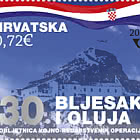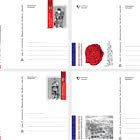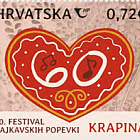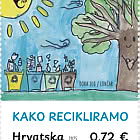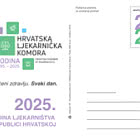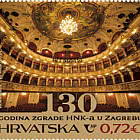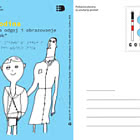Samobor Railway Engines
The concept of Samobor Railway includes the narrow-gauge railway with the track width of 760 mm between Zagreb and Samobor that was operational between Jan. 16th, 1901 and Dec. 31st, 1979. The railway was constructed under the status of a vicinal (commercial) railway. Its length was 19 kilometres and its construction was financed by the joint stock company Vicinalna željeznica Zagreb-Samoborheadquartered in Budapest. After WWII, the railway became a part of JDŽ and on July 1st, 1950 it started operating as an independent company entitled Gradska željeznica u Zagrebu (GŽZ). In 1951 the railway was extended by 5 kilometres from Samobor to Bregana. During the next two decades, investments were made into railway renewal and modernisation of mobile capacities. Despite that, the railway transport on that track could not compete with the expansion of the roadway transport so the Samobor Railway was closed for transport at the beginning of 1980. Used engines or leased engines were mostly used to pull trains on that track. The only new engines were a steam locomotive no. 7 and aluminium diesel-electrical motor trains.
Steam Locomotive No. 7
Narrow-gauge tender steam locomotive no. 7 was built to pull light passenger and mixed trains at low railways. Small in terms of dimensions, but light and fast, the locomotive was simple to maintain. Locomotive no. 7 had flat steam valves, a Heusinger steering wheel and a lever handbrake. All types of coal were used as fuel. It had a tall chimney with an arrestor mesh. The amount of coal that could be stored was sufficient for trips between Zagreb – Samobor. This type of a locomotive was built in the Orensteinand Koppel factories in Berlin Drewitz between 1923 and 1930. Today, the steam locomotive no. 7 can be seen at the Nikola Tesla Technical Museum in Zagreb.
The locomotive's power is 44 kW (60 KSi), its length is 6380 mm, empty locomotive mass is 10 t, operating locomotive mass is 12 t, water tank is 2.5 m3, coal supply is 0.5 t, and the greatest permitted speed is 25 km/h.
Diesel-electrical Motor Train DEV I
The construction of the first aluminium train was instigated by Milan Holjevac, an engineer and the Director of Gradska željeznica Zagreb (GŽZ) that was operating on the Samobor Railway from 1950. The motive for construction was the need to modernise transport and replace the steam engines with cheaper motor engines. Those in charge decided to introduce motor trains. However, since it was not possible to import them, in 1956 a decision was made to design and construct such vehicles exclusively with the assistance of the domestic industry. GŽZ was put in charge of the project and then it started constructing diesel-electrical motor trains for the narrow-gauge railway. 18 domestic factories in the function of co-operators participated in the construction of the vehicle prototypes. One of the more important ones among them was the Janko Gredelj railway vehicle factory. Vehicle prototypes were built in the workshop at the City of Samobor Railway between 1956 and 1959. Their construction marked the beginning of aluminium use in the execution of construction of track vehicles which was a complete novelty on the European and global levels.
The project called for the construction of a three-part motor train with a dual motor engine. The entire composition was supposed to be made of steel, but it turned out to be too heavy for the power of the engine motor and for the durability of the bridge across the River Sava by Podsused. Therefore, a decision was made to execute the entire composition of aluminium alloys procured from the newly opened Boris Kidrič light metal factory in Ražine by Šibenik. The train composition consisted of three wagons with two end ones being drive wagons and the middle one only passenger wagons. They were interconnected by tensile reflective equipment and folding bellows. The train featured 184 seat and 116 standing spots. It was equipped with two pulling sets of equipment, one on each side of the drive wagon allowing driving on both sides. The train's drive was combined and realised with a four-stroke diesel motor with six cylinders of the FR type and the 140 KS power manufactured in the Famos factory in Sarajevo and electrical engine motor manufactured in the Končar factory in Zagreb. The wagons had four axels with two revolving bases. Each wagon was divided into two partially walled off sections. The door would fold open and close and had a pneumatic drive. Due to its attractive appearance and aerodynamic shape, the aluminium trains got their popular nickname – Silver Arrows.
The first aluminium diesel-electrical motor train DEV I became operational on April 29th, 1959. In 1961 and 1962 two other aluminium three-part trains also became operational, followed by the aluminium single motor train (railcar) in 1965. Three years after the transport was abolished on the Samobor Railway, in 1983 all four aluminium train compositions were disassembled. Only one motor wagon in a very bad state managed to escape the scrap yard.
Train length is 46.1 m, width is 2.5 m, height is 3.3 m, mass is 42.2 t, the greatest axel load bearing is 5.5 t, and the highest speed is 60 km/h.
Professor Helena Bunijevac
Croatia - Recommended stamp issues
WOPA+ recommended stamp issues
| Avatar - Fire and Ash |
| Issued: 03.12.2025 |
| ›New Zealand |
| 50th Anniversary of the Founding of the 24th November Bar Scout |
| Issued: 24.11.2025 |
| ›Montenegro |
| Krisjanis Valdemars |
| Issued: 02.12.2025 |
| ›Latvia |
| Sign Language - Good |
| Issued: 02.12.2025 |
| ›Bosnia and Herzegovina - Republic of Srpska |
| In Memory of the Fallen and Murdered on October 7, 2023 |
| Issued: 08.10.2025 |
| ›Israel |
| Annual Collection Folder (New York) |
| Issued: 05.12.2025 |
| ›United Nations |
| Year Set |
| Issued: 24.11.2025 |
| ›Isle of Man |
| Shipping in the 17th and 18th Centuries - Peat Shipping |
| Issued: 05.12.2025 |
| ›Netherlands |









